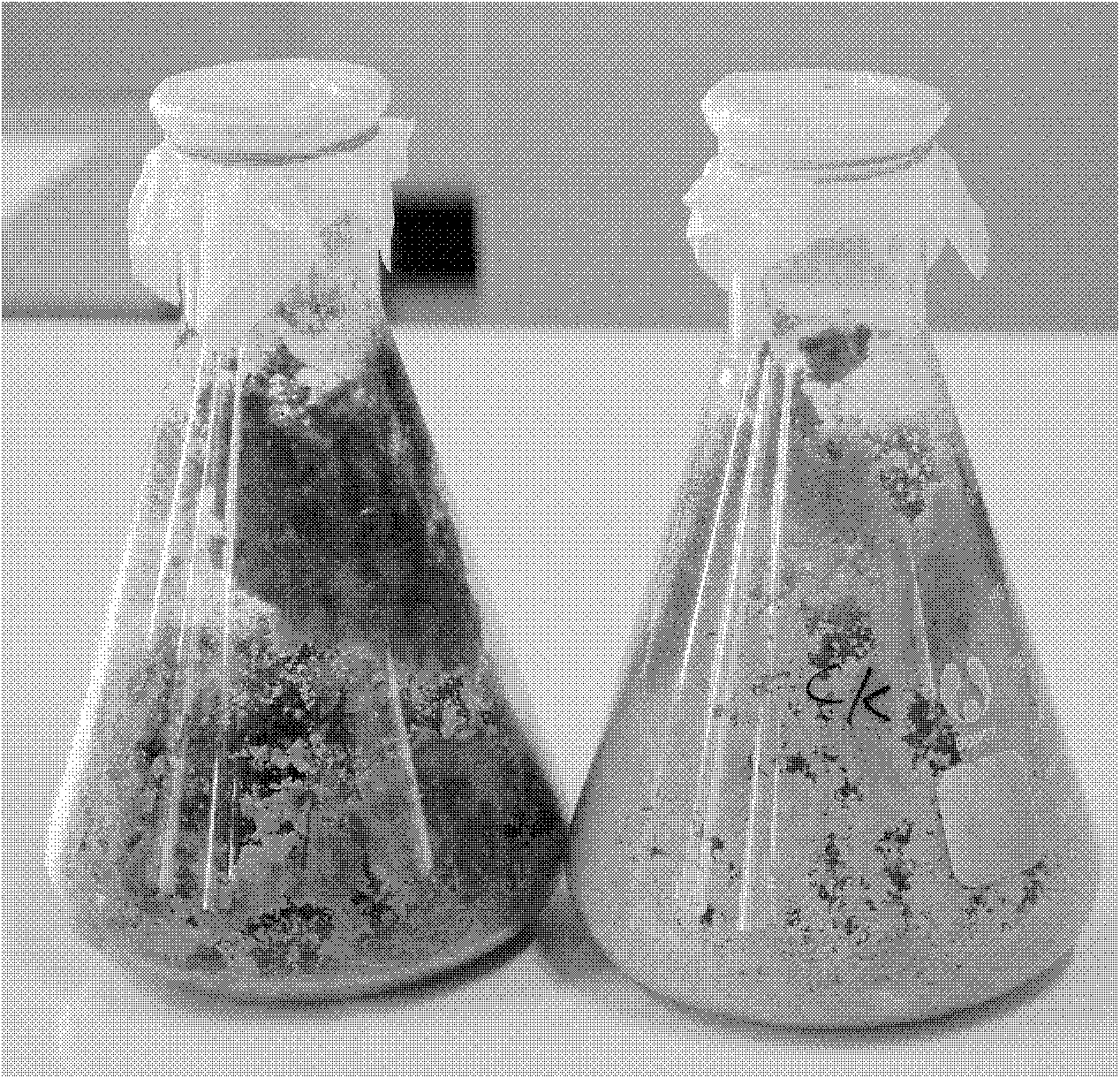Bacillus subtilis and feed additive and fermenting agent thereof
A technology of Bacillus subtilis and feed additives, which is applied in the field of Bacillus subtilis and its feed additives and starters, which can solve the problems of difficult to tolerate the high temperature of feed granulation, enzyme production by strains, poor antibacterial ability, and difficult to break through. , to achieve the effect of improving animal immunity, strong stress resistance, and strong cellulase production ability
- Summary
- Abstract
- Description
- Claims
- Application Information
AI Technical Summary
Problems solved by technology
Method used
Image
Examples
Embodiment 1
[0030] Example 1 Screening of Bacillus subtilis CGMCC No.4628
[0031] 1. Primary screening
[0032] Natto, tempeh, fermented bean curd, pig manure, chicken manure, cow manure and other samples of 5 grams each, soaked in 20ml of sterilized 0.85% normal saline, oscillated to disperse the samples, so that the samples were fully in contact with the normal saline, and placed in a constant temperature water bath at 90°C. Set aside for 10 minutes, take 5ml supernatant, centrifuge at 5000rpm for 10 minutes, and discard the supernatant. The bacterial cell pellet was added to 10ml of artificial gastric juice, and allowed to stand at 37°C for 2 hours. Centrifuge at 5000rpm for 10 minutes, discard the supernatant, add the cell pellet to 10ml of artificial bile salt, and let stand at 37°C for 4 hours. After shaking and mixing, apply LB medium by gradient dilution. After culturing in a 30°C incubator for 12-24 hours, the colonies were purified. The N-1 and N-2 bacteria isolated from th...
Embodiment 2
[0047] Example 2 Identification of Bacillus subtilis CGMCC No.4628
[0048] (1) Preliminary identification of Bacillus subtilis C-1 (CGMCC No.4628)
[0049] Observe the colony morphology of the screened C-1 (CGMCC No.4628) bacteria, and observe the morphological characteristics of the bacteria after Gram staining. The surface of the colony is rough and wrinkled, opaque, dirty white, the colony is round, the edge is jagged, Gram-positive bacteria. The shape of the spores is oval to columnar, located in the center of the thallus or slightly off, and the thallus does not expand after the formation of the spores. It was preliminarily speculated to be a strain of the genus Bacillus.
[0050] (2) Molecular identification of Bacillus subtilis C-1 (CGMCC No.4628)
[0051] Use the bacterial universal primers to carry out PCR identification on the screened bacterial strains: extract the template DNA according to the operating instructions of the bacterial DNA extraction kit. Use the...
Embodiment 3
[0052] C-1 bacteria (CGMCC No.4628) was identified as Bacillus subtilis. The preparation of embodiment 3 bacillus subtilis CGMCC No.4628 bacterium powder
[0053] Take 10 mL of overnight cultured Bacillus subtilis CGMCC No.4628 and transfer it into 500 ml of fermentation medium (initial inoculum size is 2%), and ferment at 28° C. for 14 hours, the pH value is 7.0, and the rotation speed is 180 rpm. After fermentation, the cells were centrifuged, dried at 60°C, and the bacterial powder was stored at 4°C.
[0054] Plate colony counting method detects that the number of viable bacteria in the powder is about 10 10 CFU / g.
[0055] The composition of the fermentation medium is: sucrose 10g / L, peptone 5g / L, beef extract 3g / L, yeast extract powder 1g / L, magnesium sulfate heptahydrate 0.5g / L, manganese sulfate 0.0005g / L, pH 7.0.
[0056] The operation method of the plate colony counting method is: after the sample to be tested is diluted by an appropriate multiple, the microorganis...
PUM
 Login to View More
Login to View More Abstract
Description
Claims
Application Information
 Login to View More
Login to View More - R&D
- Intellectual Property
- Life Sciences
- Materials
- Tech Scout
- Unparalleled Data Quality
- Higher Quality Content
- 60% Fewer Hallucinations
Browse by: Latest US Patents, China's latest patents, Technical Efficacy Thesaurus, Application Domain, Technology Topic, Popular Technical Reports.
© 2025 PatSnap. All rights reserved.Legal|Privacy policy|Modern Slavery Act Transparency Statement|Sitemap|About US| Contact US: help@patsnap.com



